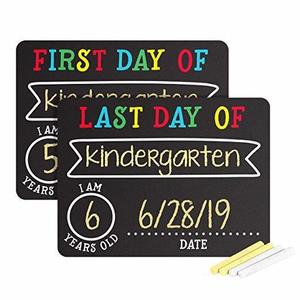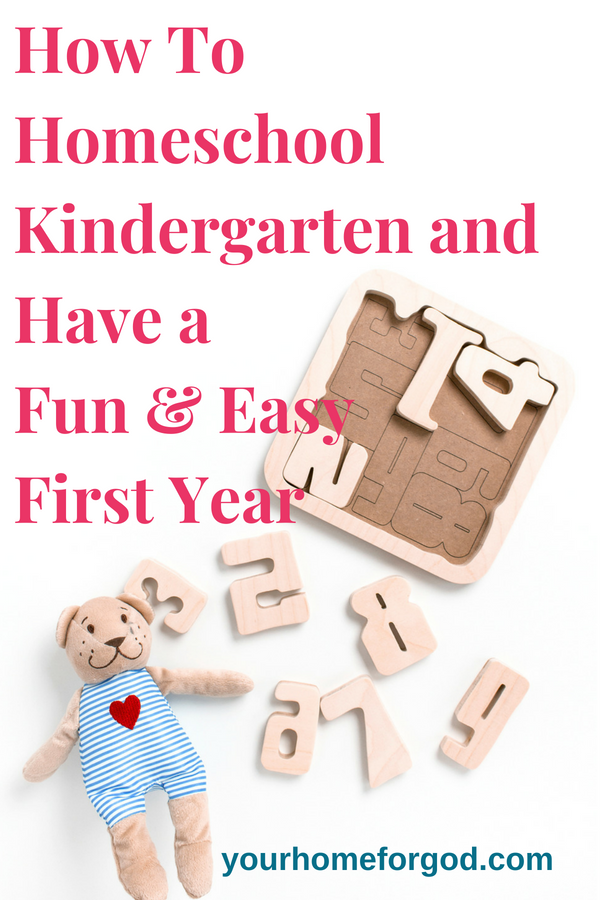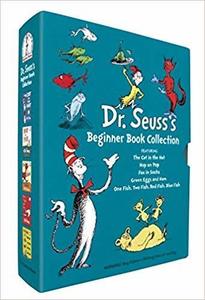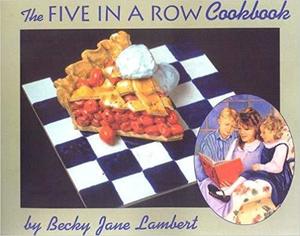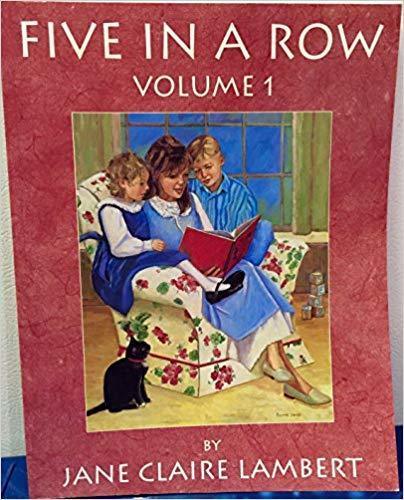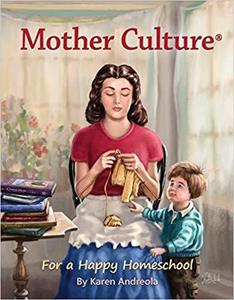A Letter to the Homeschool mom just starting out Homeschooling Kindergarten

Dear Friend…
Are you Homeschooling Kindergarten or Preschool this year? I am giving you a virtual hug right now. Come on in, sit down, and have a cup of tea, (or your favorite coffee) just the way you like it, and let’s talk. First, I want to applaud you for desiring to Homeschool your child, and I want to reassure you. Take a deep breath, because it’s going to be great!
Let me share some encouragement with you:
- God gave you to this child as his mother, knowing you were the perfect one for the job.
- God gave you the authority to raise your children, and to make decisions in their best interests.
- You are equipped by God to teach your children and raise them for His glory.
- Everything your child knows right now–and it’s a lot–you have taught him.
- You have been Homeschooling your child since before he was born.
- No one knows your child better than you, and your husband, or loves him more–so, who is better to teach him?
This is going to be a great Homeschool year!
Disclaimer: There are affiliate links present in most everything you read on this site. That just means that, at no cost to you, I may receive a small commission if you click on a link and follow through to make a purchase. This is one way you can support Your Home For God, so thank you!
Two things I would say to you, if I was literally sitting in front of you, right now:
and…

As a veteran Homeschooling mom, here are 3 things that I would recommend NOT TO DO and 5 things I would recommend TO DO:
3 Things Not To Do As You Begin Homeschooling Kindergarten
- 1Look at what other moms are doing and try to copy that–Don’t Compare.
- 2Listen to fearful and negative people–Stay away from Fear-mongers.
- 3Think you should be doing what the public school does–Don’t bring public school into your homeschool way of teaching.
5 Things To Do Homeschooling Kindergarten or As A New Homeschooler
- Ask the Lord what you should be doing and listen to Him, committing your Homeschooling and family to Him.
- Listen to Veteran Homeschooling moms and read what they have written.
- As you begin Homeschooling, do hands-on learning more (what looks more often like play and family interaction) and workbooks less (what looks more like school and sitting at a desk or table), especially in Preschool and Kindergarten.
- Read, read, read. Read Living Books together as a family. Here are my recommendations. These are book lists by age.
- Smile at your children often, and enjoy being together.
Homeschooling Kindergarten, You are not going to ruin your child
I promise you, you won’t ruin your child. I promise you, you can Homeschool Kindergarten! You are qualified to do this. Where I live, we didn’t have to report that we were Homeschooling Kindergarten to the district, or report anything, until the child was seven years old. (I cannot tell you what the rules are in your area–you will need to check that out.) If you do nothing but read excellent, living books to them this whole year, they’ll be way out ahead of other children their age.
How To Have a Fun, Easy, First Year Homeschooling Kindergarten
To reassure you, and give you an idea of how easy and fun it is Homeschooling Kindergarten and Preschool, I randomly looked at a Scope and Sequence for Kindergarten, and here are some things a Kindergartner “needs to learn,” according to the Scope and Sequence, (the guideline the state puts together for what a child “should” learn in that year/age), and how you can easily accomplish these objectives at home. I will look at just two areas that are important and fun!
Note: the Scope and Sequence can be intimidating, but let me assure you, first of all, that it is not written in stone! The fact is that you could pick up a dozen different Scope and Sequence lists for 4th-6th grade, for example, and you’d find the requirements different in each and every one. In general, they would have similar things, but some would teach it in 4th grade, some later, and some would make a big deal of one thing, and the other woudn’t mention it at all. They are guidelines! Second, they are written in education-eze, and sound harder than they are! Read on to see what I mean.
How to Homeschool Kindergarten and Accomplish the Scope & Sequence for Art
- Play with playdough, sculpting things
- Incorporate art into your other subjects, for instance, while going on a nature walk as a family (Science), collect colored leaves in the fall, and stencil with them. Give opportunity to feel their texture, and look at the different shapes.
How to Homeschool Kindergarten and Accomplish the Scope & Sequence for Language Arts
- Read together, cuddling up in a chair or on the sofa with them
- When you’re reading together, point out to them the title, the author, the table of contents, and other parts of the book
- They’ll notice that you turn the pages from left to right and that you’re reading from top to bottom
- Read Living Books
What are Living Books?
Read my post here for a list of books by age that are some of my favorite Read-aloud Character-building Books for Kids!
Have you noticed I’ve used the phrase “living books” a few times? Are you familiar with that phrase? I strongly encourage you, as you learn how to Homeschool and start to Homeschool kindergarten, or are looking into it as an option, look into the Charlotte Mason approach to educating a child. The Charlotte Mason approach defined living books this way:
“Living books are usually written by one person who has a passion for the subject and writes in conversational or narrative style. The books pull you into the subject and involve your emotions, so it’s easy to remember the events and facts. Living books make the subject ‘come alive.”
From the Simply Charlotte Mason website: “They can be contrasted to dry writing, like what is found in most encyclopedias or textbooks, which basically lists informational facts in summary form. You might be surprised to find that living books are available for most school subjects — even math, geography, and science! Check out our CM Bookfinder for hundreds of living book suggestions.”
How to Homeschool Kindergarten and Accomplish the Scope & Sequence for Language Arts, continued
- Play with letter blocks and make the sound of the letter on the block, instead of naming the letter
- Put 3 blocks together, such as C, A, T, and make each sound, then say the word, cat
- Talk in your home to your child (identify locations of items, and have them bring you the items you need).
- Use your normal vocabulary, and when they don’t know a word, explain what it means
- Read Dr. Seuss rhyming books
- Have your child help you sort the laundry for washing, by color, and fold the clean laundry, sorting by color, size and shape
- Have your child help you in the kitchen, cooking, and follow the instructions on the recipe in order, having them do whatever they are able to do to help you and teaching them about the tools and foods, and using measuring cups and spoons.
- Teach your child the interrupt rule. (See below for directions on how to teach this.)
How to Teach the Interrupt Rule*
When you are talking to another person, and your child wants to speak to you or ask a question, teach them to silently put their hand on your arm, and wait. They should not run up and stand in front of you or burst into your conversation. They should be taught to honor others, especially their elders!
Your child should stand still, not fidgeting, silently at your side. They should not be patting your arm, or pulling on you, but simply laying their hand on your arm. Put your hand on their hand, without looking at them, to let them know you are aware of their presence, but continue talking to the other person, giving honor to the person you are talking to, and the conversation you are in.
After a few moments, when you are ready to hear your child, say, “Excuse me,” to the person you are speaking to, and turn to your child, thanking your child for being patient, and polite, and pleasantly ask your child what they need.
Do not allow them to steal you from your conversation! Practice this at home. Have them politely ask you their question or make their request. Quite frequently, after they’ve asked you their question, you need additional information, and you need time before you can give them an answer. You may need to talk to your husband about what they want. They will have to wait until a later time when you will be able to discuss it.
Train them to say, “Yes, Mom,” or “Yes, ma’am,” and receive this answer graciously. Train them to accept your response, without whining, begging, or arguing. Train them that, if they beg or whine, the answer will be an automatic, “No.”
You have been given authority, by God, as this child’s parent and authority. You are in charge. They will learn very quickly and are very capable of learning this! Your job is to be confident and consistent. Remember, it is for their best!
Disclaimer: There are affiliate links present in most everything you read on this site. That just means that, at no cost to you, I may receive a commission if you click on an affiliate link and make a purchase. This is one way you can support Your Home For God, and I appreciate it so much!
Learning polite manners and patience in waiting, and preferring others before yourself, are skills that all people benefit from learning, and they are Biblical. They are cultural norms that will help your child function well in society, and succeed.
You want others to enjoy being with your children. This one teaching tool will make the difference between children who are obnoxious to others and children who are received with joy by others. It will bring peace into your home, as well.
You must practice this at home! Expect them to learn it, however, and make them wait longer, if they don’t follow this rule. They will learn it. Trust me!
*I don’t know if the Interrupt Rule originated with them, but our family learned the Interrupt Rule in a Growing Kids God’s Way class.
Homeschooling Is Woven Into Life
I hope that you are seeing that, in your everyday activities, you are accomplishing what they would be trying to accomplish in the public school, but through much less natural activities, while sitting at a desk. You have already been doing so many, if not all, of these things, which are in the Scope and Sequence for Kindergarten.
I’m not going to go into every subject, because the most important thing I want to accomplish right now is to show you that you can do this, and to encourage you!
Most Important: If You Do Nothing Else, Do This
Most importantly, if you do nothing else this year, read living books to your child. Include your younger and older children in read-aloud time. A living book is interesting to all ages. I have dedicated a post to a list of books to start you off here.
Do the everyday chores at home (check out these chore charts) and involve them in helping you. At this age, they are eager to help! Now is the time to show them how to do things, and have them by your side. Yes, you can do it faster, and better. That’s not the point. You are investing in your child, but also training up your future helpers.
Set up routines and structure in your home, so that they know what to expect, and that “this is the way we do things here.”
Expect courtesy and kindness. Teach them to be their brother’s and sister’s best friend. Friends will come and go, but they will always have their brothers and sisters.
Train your children well–raise Godly kids–and expect them to obey you the first time you speak to them, and not only you will enjoy being with them, but others will, as well.
What a privilege it is to Homeschool your children, and be home with them!
Many Homeschoolers eventually develop their own style and curriculum, bringing in this resource or that book, to meet the needs of their unique family. At the beginning, though, you may want to have something more structured for you.
Though you can do very nicely just checking out library books, and you can find many books through inter-library loan, it is a skill to know which books to look for and how to find them, and we all know how fun it is to buy curriculum! So, here are my Homeschool curriculum recommendations!
Homeschool Curriculum Recommendations for Kindergarten
Five in a Row (Ages 4-8)
From their website: “Five in a Row is comprised of 4 manuals. Five in a Row, Volumes 1-3 contain units that are all written at about the same level based on books at about the same level, and the units can be completed in any order. The units in Volume 4 are based on more difficult literature, cover more challenging concepts and designed to be completed over a two week period of time. Together, the four volumes of Five in a Row contain 70 unit studies covering Social Studies, Geography, Language Arts, Applied Math, Science and Art in a way that causes children to fall in love with learning.”
Because 5 In a Row book lists can be found online, and used, without buying their curriculum, by checking out library books, and adding to the list with more great books that you find in your library search, that’s what I’d recommend, to save you money. I also know that when you’re starting out, it’s nice to have some hand-holding, and guidance, and this provides some of the best.
If you want a little more help as you start out, and there’s nothing wrong with that, lesson plans can also be purchased which will help you.
Sonlight Curriculum
Sonlight Curriculum is another book-based curriculum that is very popular among Homeschoolers. Two thoughts:
- 1I have known many Homeschoolers who used Sonlight. While the program is excellent, I see moms feel, “We HAVE to get through these particular books”! And, it can be expensive to buy all the books. Don’t feel restricted.
- 2Some of the books on the Sonlight list are just what you want to be reading: quality literature, but the lists also include some books that aren’t as excellent quality, but moms are afraid to deviate from the list.
Charlotte Mason
If you are new to Charlotte Mason, click on the links here to discover more about this approach. I would recommend Charlotte Mason’s approach to you. This method gives you the best of both worlds: the help you need at the beginning, should you desire it, and the opportunity to tailor your Homeschooling to your family, and your child’s interests.
The Charlotte Mason approach encourages reading excellent literature–Charlotte Mason’s living books, she calls them–and provides lists for reading. But, it doesn’t hurry you through, emphasizes the whole child, with their needs and growth, and the Bible.
Karen Andreola is the resident expert on Charlotte Mason. I love her writing! Click on this link to see her books, including A Charlotte Mason Companion.
The emphasis on the Bible at the center of your lives is one of the strongest points I can make to recommend using the Charlotte Mason approach. Compare Sonlight and Charlotte Mason and learn some of the benefits, but also the flexibility possible, as you choose your curriculum.
Read These Other Posts on Homeschooling
Part 1: 10 Reasons Why I Love Homeschooling and You Should, Too!
Part 2: Homeschool Curriculum 101
Part 3: Homeschooling is Hard, But So Worth It
Part 4: Look at the Benefits of Homeschooling Objectively
Part 5: What are The Most Important Things in Parenting (Video)
Bonus Post: How to Succeed in Parenting by Depending on the Lord
Additional Related Post: What is the #1 Character Trait You Need To Train In
Next: The Series below will help you overcome one of the main obstacles to Homeschooling success, which is getting your kids to listen and obey. It will help you achieve your goals for Raising Godly Kids, becoming the kind of family you want to be. Read this Series on “Obedience in Children,” beginning with “Raising Godly Children,” plus “How to Be a Good Parent.”
Part 1: Raising Godly Kids
Part 2:What is the #1 Character Trait You Need to Train In
Part 3:How to Be a Success in Child Discipline
Part 4:How to Stop Being a Repeating Parent
Part 5:Christian Parenting is Tough
Bonus Post: How to Discipline My Child
Bonus Bonus Post: How to Be a Good Parent
Have a Great Day Making Your Home For God!

I help Christian moms raise their kids according to Biblical principles, get organized to manage life, achieve their unique God-given goals and dreams, and fulfill God’s purpose for them to make a difference in the world through my workshops, courses, and coaching founded on Biblical principles. You are already successful in many areas. I can help you in those that you’re not. Dream big dreams, and see God transform and use your life in amazing ways! Let’s work together for your success!
In Your Home For God’s Store, discover resources to help you get organized, raise Godly kids, and have the support and encouragement to know who you are, know what God wants you to do to fulfill His purpose for your life, and achieve His unique goals for you!
Subscribe to My Youtube channel for more Encouragement and Tips! New videos every Tuesday and Thursday!

